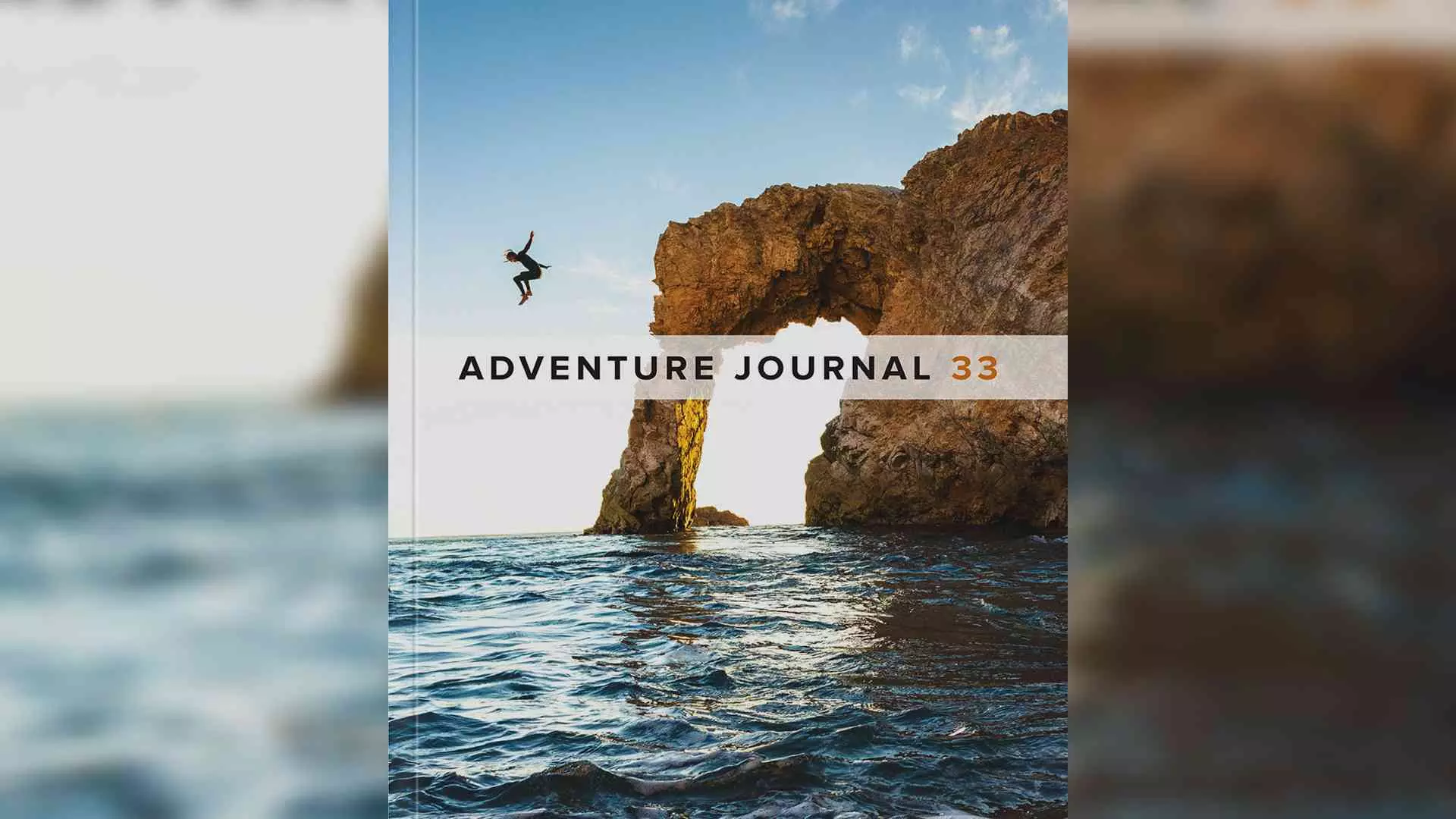
John Branch
In an ordinary industrial building off a busy Orange County street, a Seussian contraption, nearly 100 feet long, clattered to life. The room filled with the hum and squeaks of belts and machinery. There was the smell of hot glue. Like passengers on a dark amusement ride, bundles of colorful magazine pages, printed a week earlier, began a wild, circuitous journey, through tunnels and up ramps, that lasted a few minutes. The bundles were somehow cut and collated. The long edge of each new 130-page sheaf was dipped into a pool of melting glue, then dropped into a U-shaped cover. After drying during a series of slow corkscrews, the new magazine’s edges were chopped smooth by guillotines and emerged through an opening. Unimpressed men stacked them into boxes.
Nearby, Stephen Casimiro held one of the 7,200 copies in his hand. Casimiro, a former editor of Powder and National Geographic Adventure, is the founder and publisher of Adventure Journal, an unapologetically analog magazine at the heart of an old-school trend.
He sifted through the pages. He smiled. “People will have this in their hands, on their coffee table,” Casimiro said. “That was the idea. We’re all exhausted from our screens. We want something to savor.”
There are sprouts of life, even profitability, on the landscape of print media and magazines, cratered by the pixilated bombardment of the digital age. High-end niche periodicals are popping up, but the trend might be most evident in a burst of small-batch, independent outdoors magazines like Adventure Journal, Mountain Gazette, Summit Journal and Ori. They are crowding into quiet spaces of narrow lanes — climbing, surfing, skiing, running and the like — where quality is key, advertising is minimal and subscribers are faithful. Most do not put their content online; this is journalism meant to be thumbed through, not swiped past.
The magazines are sometimes oversized and increasingly matte finished, filled with edge-to-edge photographs and literary heaves. They can cost $25 or more per issue. They are meant as much for the coffee table as the shoulder bag — designed to be collectible, not disposable.
Like vinyl records and micro beers, they’re aimed at a small audience with appreciation for the craft. Most are at-home operations where the editors are owners, managing a web of freelancers and overseeing every bit of the production cycle. Like Casimiro, many are expats from the wreckage of iconic glossy magazines that lost luster in an era of consolidation, venture capitalism and attention spans deemed too short to consume anything but algorithmic candy. “The screen experience is so reductionist,” Casimiro said. “It just flattens the world, so that a Pulitzer Prize-winning story feels the same as spam. Some things deserve better.”
In Seattle, Ori founder Kade Krichko called it the “slow-read movement.” Near Lake Tahoe, Mountain Gazette owner Mike Rogge believes “we went too far in the digital realm — and now we’re pulling it back.” In New York, writer and climber Michael Levy has resurrected Summit (calling it Summit Journal), seeing a desire for curation.
“There’s a lot of really good stuff in the outside ecosystem, but it gets drowned out by the noise,” Levy said. “I have no interest in just trying to churn out content.” Back in California, where he began publishing the quarterly Adventure Journal in 2016, Casimiro, 62, considered the wave of titles that have followed his lead, mostly since 2020. “Outdoor boutique magazines are having a moment,” he said. “Absolutely, unquestionably.” Then he deflected credit, a few miles away and several decades back.
It was first published in 1992, before the digital age, by the husband-wife team of Steve and Debbee Pezman. Exiles from Surfer magazine, where he was the longtime editor and publisher and she was the marketing director, the couple saw mostly read-and-toss surf magazines aimed at teenagers. They felt a void for something meatier, for adults like them.
The vibe they wanted was a surf-centric cross between National Geographic and Architectural Digest. A minimalist cover. A flat binding meant to stack or shelve. Deep stories, beautiful photography. An aura of timelessness.

